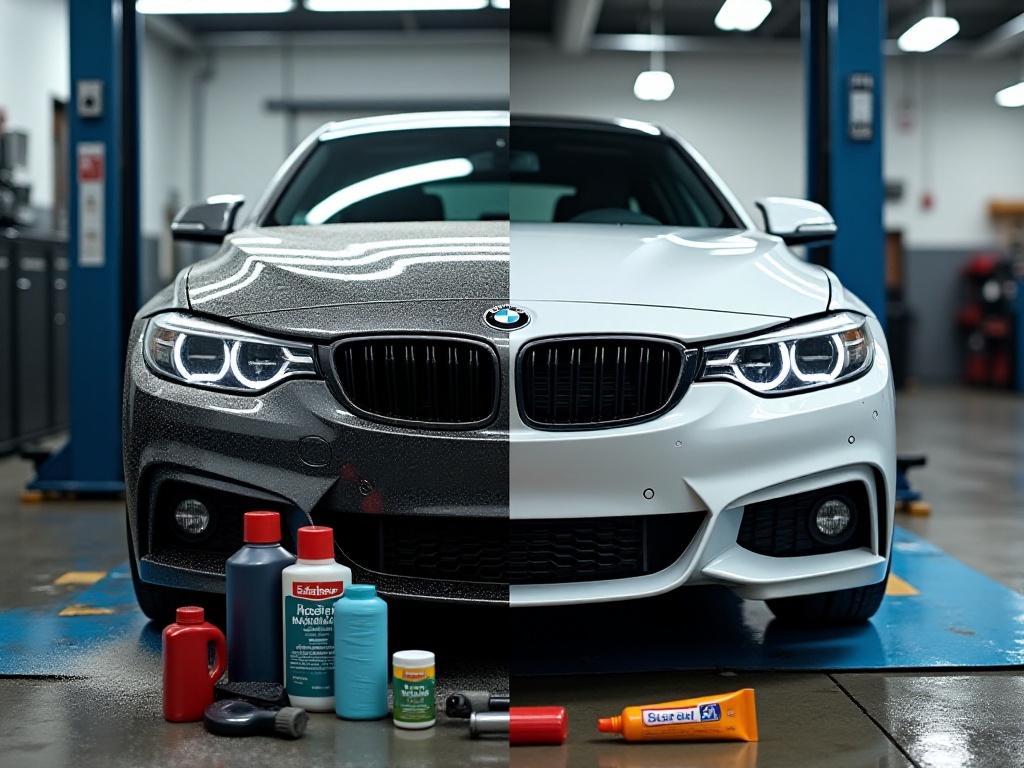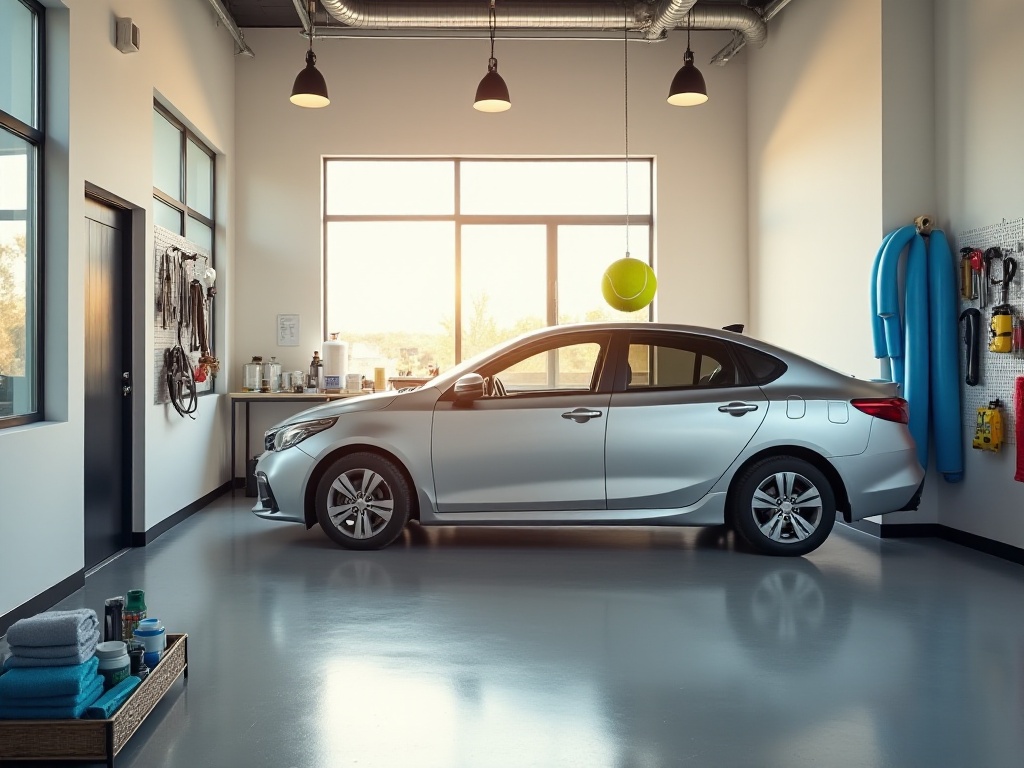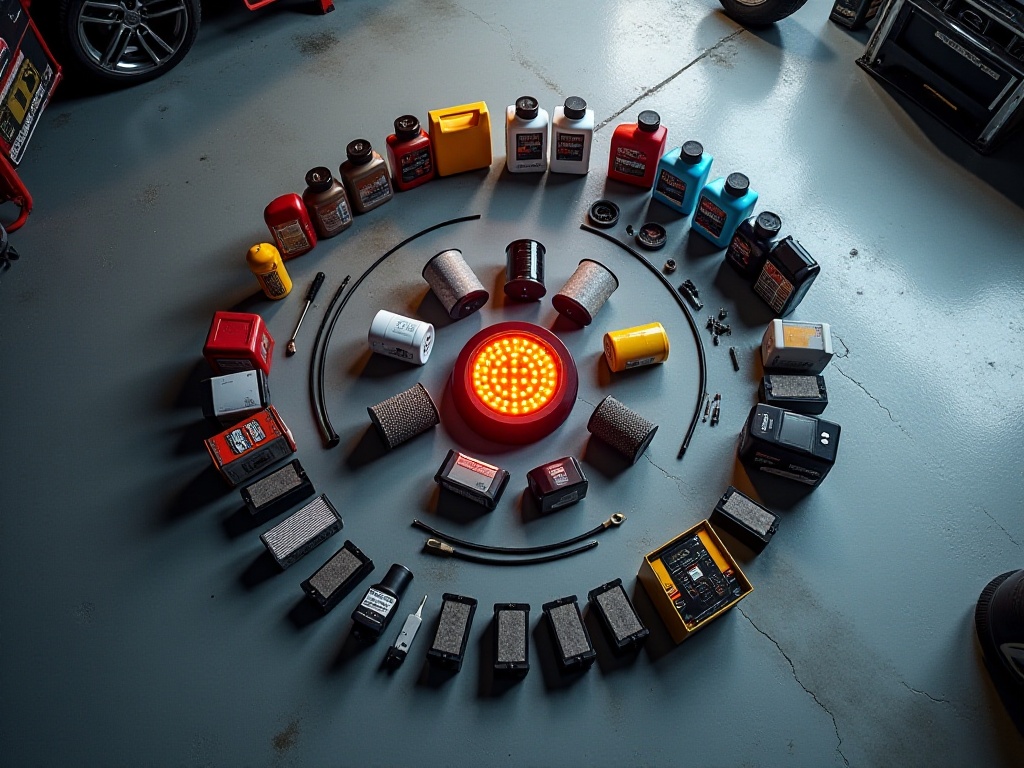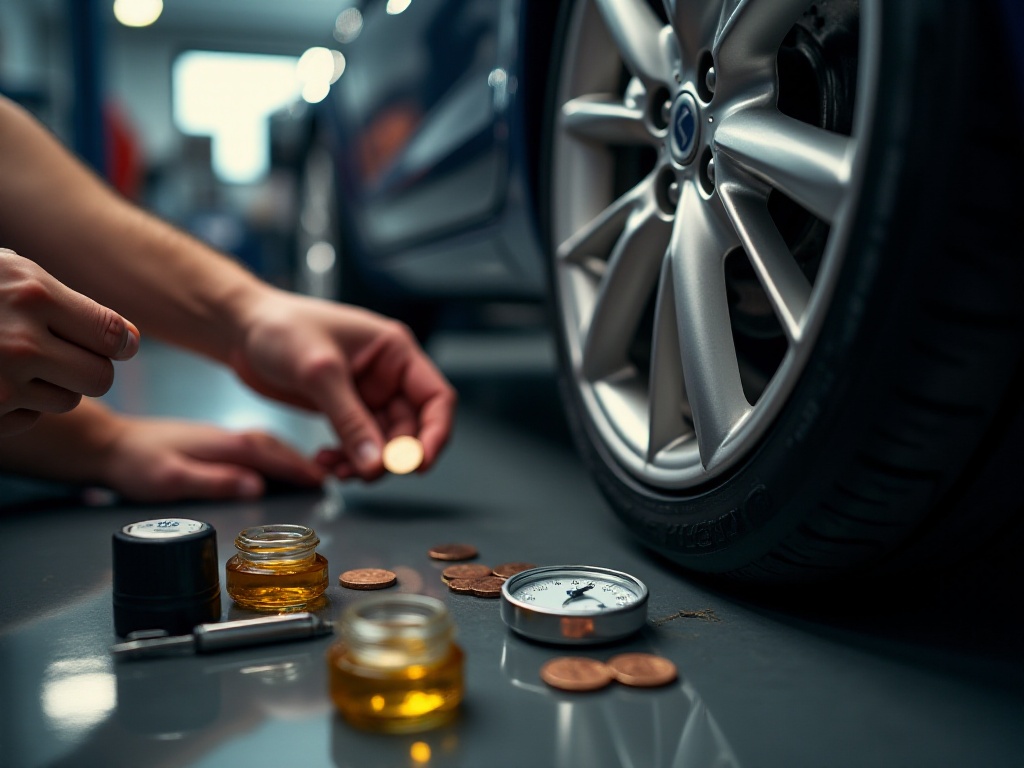As an experienced driver of several years, I deeply understand the importance of keeping a car's interior organized. When I first started driving, like many beginners, I kept my car messy. Shopping receipts, bags, and beverage bottles were scattered everywhere, and the trunk had become a storage room where finding a charger meant turning everything upside down. After years of experimentation, I've developed a highly practical organization system that will keep your car perpetually tidy.
Let's first address garbage collection. I discovered that an empty cereal box is the perfect car storage solution. It's just the right size - compact yet spacious enough to hold plenty of items. I usually secure it under the back seat or passenger seat, specifically for collecting receipts, wrappers, and other small trash. I've used this method for several years with excellent results. Simply emptying it whenever you park instantly refreshes the entire car interior.
Speaking of storage solutions, bathroom organizers are my absolute favorite. Many might think these are just for bathrooms, but they're incredibly useful in cars too. I hang one on the front seat headrest to store frequently used items in layers. The top layer holds tissues and wet wipes, the middle layer stores car chargers and cables, and the bottom layer contains spare snacks and emergency supplies. This organized storage makes everything easily accessible, eliminating the need to search everywhere.
Additionally, I keep several collapsible storage boxes in the trunk. They stay folded when not needed but can be expanded when required. I usually have three different-sized boxes: large ones for car repair tools and emergency equipment, medium ones for cleaning supplies and umbrellas, and small ones for frequently used miscellaneous items. This categorized storage not only keeps the trunk neat but also makes finding things convenient.
The door storage compartments are often overlooked storage spaces. I install a small garbage bag hook in them, allowing passengers to dispose of trash easily instead of leaving it around. I usually keep frequently used small items in the remaining space, such as parking cards, tissue boxes, and portable umbrellas.
The center console organization is also crucial. I've seen many people stuff this area full of various items piled together. This not only looks unsightly but also makes finding things difficult. I recommend keeping only the most frequently used items here, such as phones, sunglasses, and parking cards. Other less frequently used items can be stored elsewhere.
When it comes to the car's interior environment, various odors are the most troublesome issue. New cars might have leather or plastic smells, while used cars might have food odors, smoke smells, and even mustiness on rainy days. These odors not only affect mood but might also impact health. After multiple attempts, I've discovered some particularly effective deodorizing methods.
First, I highly recommend using dryer sheets. Placing a few dryer sheets under the seats or near air vents works remarkably well. These sheets don't have the overwhelming scent of perfumes, offering a fresh, natural fragrance that's easy to replace and affordable. I usually keep several different scents on hand to change according to my mood.
If there's mustiness, try activated charcoal bags. Activated charcoal has excellent absorption capabilities and effectively removes various odors. I place several charcoal bags in the car, especially in areas prone to moisture accumulation, like under the floor mats. Remember to replace them every three to six months to maintain their effectiveness.
Air conditioning system cleaning is also crucial for environmental maintenance. Many people don't realize that car odors often originate from the AC system. I recommend deep cleaning the AC system at least once annually. Regularly use the external circulation mode to keep air flowing through the car. A few minutes before parking, turn off the AC but keep the fan running to dry any moisture in the AC system, preventing bacterial growth.
Interior upholstery cleaning cannot be neglected. Leather seats should be regularly wiped with professional leather cleaners to maintain cleanliness and prevent cracking. Fabric seats need deep cleaning with specialized cleaners about every six months. Frequently touched areas like the steering wheel and gear shift should be wiped regularly to maintain hygiene.
Cleaning car carpets and floor mats is also important. I regularly vacuum the carpets and floor mats, especially in corner areas. For stubborn stains, use professional cleaners. After cleaning, it's best to dry them in the sun to maintain freshness and prevent mold.

As an experienced driver, I deeply understand how challenging parking can be for beginners. It's especially easy to scratch or bump your car in tight spaces or underground garages. After years of practice, I've compiled some particularly useful parking tips and tools.
First, let me share my favorite garage protection tool - pool noodles. The idea is simple: cut pool noodles to appropriate lengths and attach them to garage walls. This way, if you accidentally open your door against the wall, the noodle acts as a buffer, protecting your door. This method is low-cost but highly effective.
The tennis ball parking method is another favorite of mine. Hang a tennis ball from the garage ceiling, positioned to touch your windshield at the right spot. This way, when parking, you'll know to stop when the ball touches your windshield. This method is especially helpful for beginners in judging parking depth more accurately.
Besides these tools, I'd like to share some practical parking techniques. For example, when backing into a parking space, use the "45-degree rule." First, position your car one space ahead of your target spot, then back in at a 45-degree angle. This allows the car to slide into the space more naturally, rather than forcefully.
Parallel parking also has its techniques. I recommend using your side mirrors - when you can see the rear wheel of the car in front in your mirror, that's the perfect time to turn. Turn the steering wheel fully to ensure your car follows a perfect arc.
Another often overlooked detail is the distance between cars. I suggest making marks at different positions, like placing a small marker on the A-pillar. When this marker aligns with the adjacent car, you know the distance between the cars is just right. This helps you better gauge your car's position.

When it comes to car maintenance, tires are absolutely one of the most crucial parts. They not only affect driving safety but directly impact vehicle handling and fuel efficiency. As a driver with many years of experience, I particularly emphasize the importance of tire maintenance.
Let's first discuss tire inspection. Many people know they should check their tires but don't know exactly how. There's actually a very simple method using coins to measure tread depth. Insert a coin vertically into the tire tread - if you can see the top of the figure's head on the coin, it means the tire has worn to the point of needing replacement. This method is simple and anyone can master it.
Checking tire pressure is also important. I recommend checking tire pressure monthly. Many might think this is too frequent, but data shows that for every 10% drop in tire pressure, fuel consumption increases by 3.3%. Additionally, insufficient tire pressure leads to premature tire wear and affects driving safety. It's best to check pressure when tires are cold for more accurate measurements.
Tire rotation is another important aspect. Many people overlook this, but regular rotation ensures more even tire wear and longer tire life. It's generally recommended to rotate tires every 8,000-10,000 kilometers. The rotation pattern should be determined by your vehicle type, as front-wheel and rear-wheel drive vehicles require different rotation patterns.
Furthermore, tire storage requires attention. If you have spare tires or seasonal tires, proper storage is crucial. Tires should be stored vertically, avoiding horizontal placement which can cause deformation. The storage environment should avoid direct sunlight and high temperatures, preferably in a cool, dry place.
Another commonly overlooked issue is tire age. Even if the tread is still deep, old rubber can deteriorate, significantly reducing safety. Check the production date code on the tire's sidewall - tires generally should be replaced after 6 years of use, even if they look new externally.
Regarding core inspections, the most basic and important is checking the engine oil. Oil is like the engine's blood, crucial for engine protection and lubrication. Based on my years of experience, you should check the oil level and color monthly using the dipstick.
The specific procedure is as follows: First, park the car on level ground, turn off the engine and wait a few minutes to let the oil flow back to the oil pan. Then pull out the dipstick, wipe it clean with a clean paper towel, and reinsert it. Finally, pull it out again to check - the oil level should be between the upper and lower marks on the dipstick. Also note the oil color; if you find the oil has turned black or contains visible metal particles, it's time to consider changing it.
Battery inspection is equally important. Statistics show that over 40% of car problems are battery-related. I recommend testing the battery every 3-6 months. During inspection, check for abnormalities like bulging or leakage in the battery's appearance, and signs of terminal corrosion. If you find corroded terminals, clean them with baking soda solution and apply specialized anti-corrosion film.
Coolant inspection shouldn't be neglected. Engines operate at high temperatures, and insufficient or poor-quality coolant can easily lead to engine overheating. Check coolant levels when the engine is cool, ensuring the level in the reservoir is within the standard range. Also note the coolant's color - if you notice unusual coloring or impurities, consider replacement.
Brake system inspection is particularly crucial. Regularly check brake fluid levels; rapid decline might indicate a brake system leak. Also monitor brake pad wear - if you hear unusual noises while braking or feel reduced braking effectiveness, immediate inspection and repair are necessary.
Transmission fluid inspection is also important, especially for automatic transmissions. If you notice jerking during gear changes or hear unusual noises, transmission fluid might be the issue. Generally, follow the maintenance manual's requirements for regular transmission fluid changes to extend transmission life.

Regarding cleaning and maintenance, I want to share some particularly practical tips. First is headlight cleaning, which is really important as headlight brightness directly affects nighttime driving safety. After multiple attempts, I've found that regular white toothpaste can restore yellowed headlights to brightness.
The specific process is as follows: First, rinse the headlight surface with clean water, then take some white toothpaste (note: use white toothpaste, not whitening toothpaste with particles) and gently wipe the headlight surface with a soft cloth. When wiping, maintain even pressure to avoid scratching the lens. After wiping the entire lens, thoroughly rinse with clean water and dry with a clean soft cloth. This method is simple, practical, and very effective.
Intake system cleaning is also important. Many people might not know that if the intake system isn't cleaned timely, it can lead to decreased engine power and increased fuel consumption. Data shows that after cleaning the intake system, older car models' fuel efficiency can improve by 15-20% on average. I recommend deep cleaning the intake system every two years - this not only saves fuel but also extends engine life.
Wiper maintenance shouldn't be overlooked. Many people only think about replacing wipers when they're completely unusable, which is actually dangerous. I recommend regularly checking the wiper rubber - if you find cracking or hardening, replace them promptly. Also regularly clean the wipers with water to extend their lifespan.
Car body cleaning and waxing are also important. I recommend doing a deep clean at least monthly and waxing every six months. When washing, pay special attention to areas prone to water accumulation, like door edges and sunroof drainage holes. These areas can easily rust if water accumulates. When waxing, choose wax suitable for your car's paint - different colored paints require different waxes.
Interior cleaning requires even more care. Leather seats need professional leather cleaners and conditioners to maintain cleanliness and prevent cracking. Frequently touched areas like the dashboard and steering wheel should be wiped regularly, using specialized dashboard cleaners. Carpets and floor mats should be regularly vacuumed, and stubborn stains can be treated with professional cleaners.

Regarding regular replacements, the air filter comes first. According to car manufacturers' recommendations, air filters should be replaced every 12,000-15,000 miles. Though seemingly insignificant, this part plays a crucial role, directly affecting engine air intake quality. If the air filter is clogged or of poor quality, it will not only decrease engine power but also increase fuel consumption.
Oil changes are even more critical. Statistics show that over 60% of premature engine failures are related to delayed oil changes. Different car models may have different oil change intervals, but generally, it's recommended to change both oil and oil filter every 5,000-7,500 miles. When changing, choose suitable oil grades - check your owner's manual or consult professional mechanics for this.
Spark plug replacement is also important. Although modern spark plugs have long lifespans, they still need timely replacement. Generally, replace spark plugs every 60,000-100,000 miles. If you notice unstable idle or lack of power during acceleration, spark plugs might be the issue.
Brake fluid replacement shouldn't be neglected. Brake fluid deteriorates over time, and if not replaced timely, it may affect braking performance. Generally, replace brake fluid every two years or 30,000 miles. When replacing, ensure you choose brake fluid meeting your vehicle's requirements - different types of brake fluid shouldn't be mixed.
Transmission fluid replacement intervals depend on the vehicle model and usage conditions. Manual transmissions generally have longer oil change intervals than automatic ones, but regular checks and replacements are still necessary. If you notice unusual noises or jerking during gear changes, consider whether transmission fluid needs replacement.
Lastly, fuel filter replacement. This part filters impurities from fuel, preventing them from entering the engine. Generally, replace the fuel filter every 30,000-50,000 miles. If using lower quality fuel, earlier replacement might be necessary.
All these replacement items should be strictly recorded, preferably in a maintenance log recording each replacement's time and mileage. This not only helps better plan maintenance but also serves as important reference for used car transactions.
Most importantly, pay attention to various warning lights on the dashboard. These lights are like your vehicle's "health report" - illumination indicates system issues. Many owners often ignore these warnings, thinking they're insignificant, but small problems can become big ones, ultimately requiring expensive repairs. So develop a habit of checking your dashboard and address warning lights promptly.
These are all experiences and lessons I've accumulated over many years. Remember, maintaining a car is like maintaining health - prevention is better than cure. If you consistently maintain these daily care routines and regular replacements, your beloved car will surely accompany you further.
 Previous
Previous
